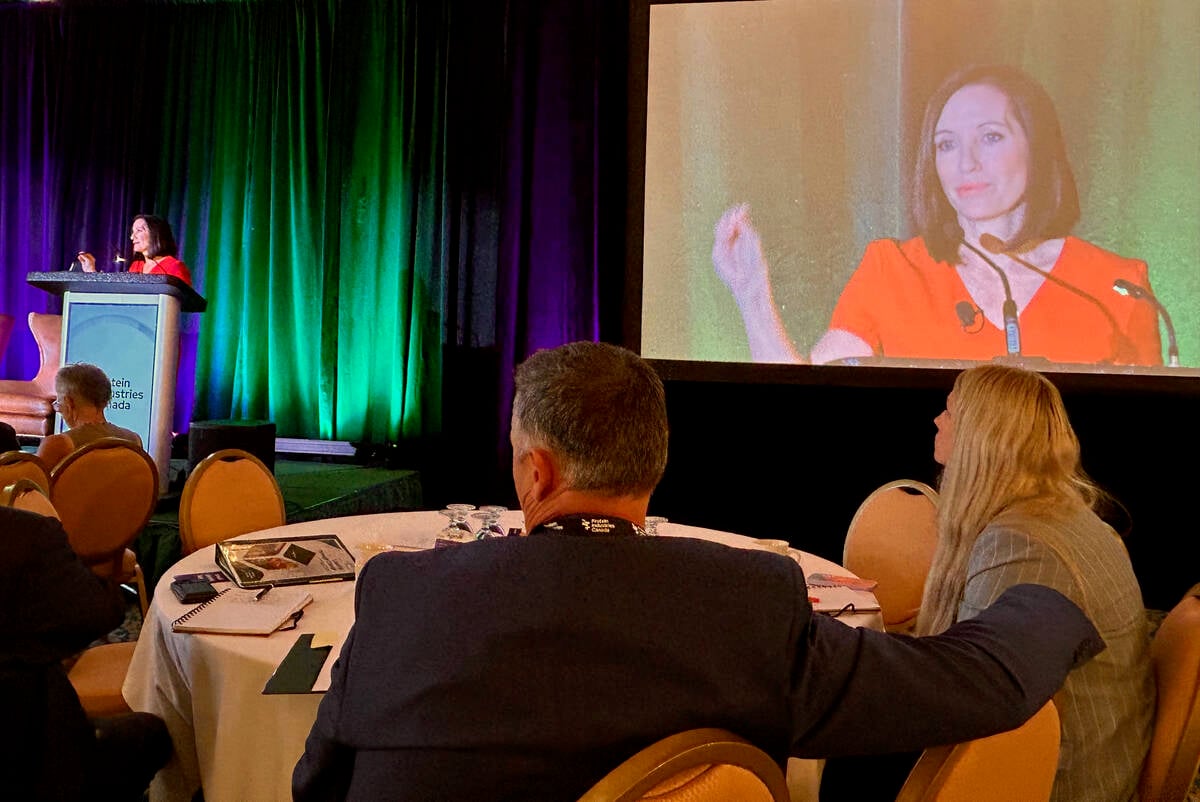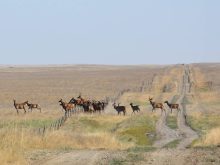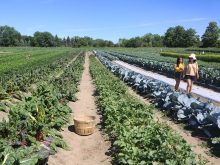EDMONTON – Alberta livestock producers will receive an immediate cash injection of $150 million to help them pay mounting bills.
They will get another $150 million in January if they comply with mandatory livestock and premises identification, said Alberta’s agriculture minister George Groeneveld.
It’s all part of an eight-point plan to create a viable livestock industry that no longer relies on government aid, but forces producers to create a globally competitive livestock industry.
“It is a crisis that will not be solved by injecting more money into the system. Another ad hoc program may be a much needed Band-Aid, but it certainly is not the cure,” said Groeneveld during a June 5 news conference.
Read Also

Canada told trade crisis solutions in its hands
Canadians and Canadian exporters need to accept that the old rules of trade are over, and open access to the U.S. market may also be over, says the chief financial correspondent for CTV News.
Beef producers will be required to comply with mandatory premises identification and animal age verification by January 2009 if they want the second half of the government payout.
Other species including swine will have their own verification requirements.
“I will tell you the cheques will only be issued after livestock producers show they are working within the new system,” said Groeneveld.
“Producers who are unable or unwilling to transform their business by meeting these conditions may need to consider ways to exit the industry.”
Groeneveld said the change to mandatory identification may not be popular, but it’s the only way the province’s livestock producers will survive in a global market that wants that information.
Mandatory livestock identification was introduced by former Alberta agriculture minister Doug Horner three years ago, but was dropped after complaints from producers.
Andrew Peden, a Minburn, Alta., beef producer, doesn’t think the announcement will have much effect.
“If we’re not making money now, I can’t see what’s changed,” said Peden, adding he doesn’t think existing voluntary age verification or mandatory cattle identification tags have given him any extra cash in his pocket.
“The livestock industry is in trouble. I can’t see that anything is going to change a lot.”
Kee Jim, chair of the Canada Beef Export Federation, said producers can’t afford to reject mandatory identification again.
“That was just post-BSE and things didn’t look too bad. It’s several years later and things are fairly dismal. I think necessity drives a lot of philosophy, not the other way around. With this program, if you want to have a personal philosophy on things, you’re welcome, only do so at your peril,” said Jim.
“There is an onus in this program put on producers to help themselves out of problems. If we do that and do all of the steps in the plan, the long term should be improved market access, improved amount of remuneration we get from international markets,” said Jim.
Dennis Fuglerud, president of the Saskatchewan Stock Growers Association, said producers don’t know yet how identification changes will affect the hundreds of Saskatchewan livestock producers who ship their cattle to Alberta feedlots. About one-third of the cattle in Alberta feedlots are from Saskatchewan.
“We know it will impact Saskatchewan producers. We don’t know to what degree,” said Fuglerud.
In the past the stock growers have rejected mandatory age verification.
“This may change things,” he said.
The Alberta government is spending $56 million this year to create the Alberta Livestock and Meat Agency to implement the new livestock strategy. The agency will be guided by a panel made up of global experts, said Groeneveld.
The agency’s role is to co-ordinate various government funds and resources and to ensure the adoption of the long-term plan. It’s still unclear how the agency will work with existing livestock marketing agencies.
In a news release, Alberta Beef Producers said it believes it is important for industry and producers to have a shared goal, but the ABP is concerned about the possible loss of producer control over business decisions.
“Mandatory age verification, premises identification and animal movement tracking will add significant costs to our production systems,” said the release.
“It is clear that the provincial government will be a major partner in the agency. The role of producers and producer organizations has not been established at this time.”
















